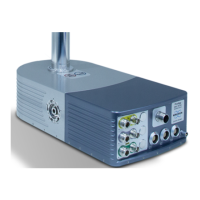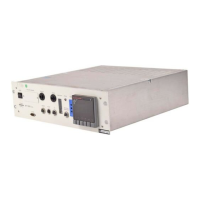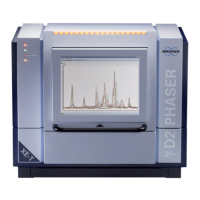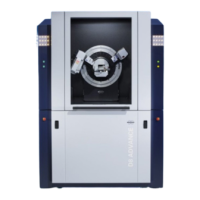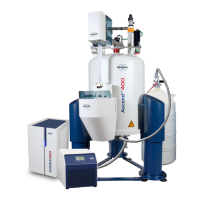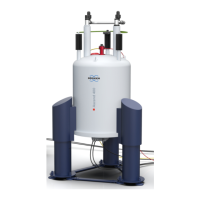94 (107) BRUKER CryoProbe User Manual
Frequently asked questions
NMR operation C.2
0
Do any experimental restrictions result from the high Q factor of
the CryoProbe?
The Q factor is optimized for each NMR coil assembly to minimize any problems
with ring-down times, radiation damping, or excitation bandwidths, still allowing
maximum gain in sensitivity.
Is the CryoProbe more sensitive to external disturbances?
Just in proportion to its higher signal-to-noise ratio.
Is it possible to measure water samples?
Yes.
Is it possible to measure samples with a high salt concentration?
Yes, but the usual restrictions apply: the higher electrical conductivity of a salt so-
lution reduces the penetration depth of the RF, spoils the Q factor of the reso-
nance circuit, and introduces additional spectral noise.
Is shimming more difficult?
Manual shimming is not much different from conventional probes. There are no
particularly strong shim gradients to be set. Gradient shimming is possible.
Does the user have to modify the pulse programs?
Usually not. Of course, those conventional pulse sequences that are optimized for
high signal-to-noise and suppression of spurious signals are still highly recom-
mended.
Which experimental parameters do I have to be careful with to
avoid damage to the CryoProbe?
Maximum RF power. In general, a CryoProbe requires significantly less RF power
to achieve the same pulse lengths as conventional probes.
Does the CryoProbe change its characteristics during long
decoupling or spin-lock periods?
Long decoupling or spin-lock periods tend to warm-up the RF components in any
probe. For such experiments, it might be advisable to equilibrate the CryoProbe
with dummy scans before data acquisition starts. Significant changes in tuning &
matching are not to be expected.
Do experimental parameters like shims and pulse angles change
after a warm-up/cool-down cycle? Is the sensitivity preserved?
Parameters like shim, tuning & matching, or pulse angles are constant with minor
variations as known from conventional probes. Experience so far indicates that
the excellent sensitivity of the CryoProbe does not suffer from repeated warm-up/
cool-down cycles if the recommended operation procedures are obeyed.
